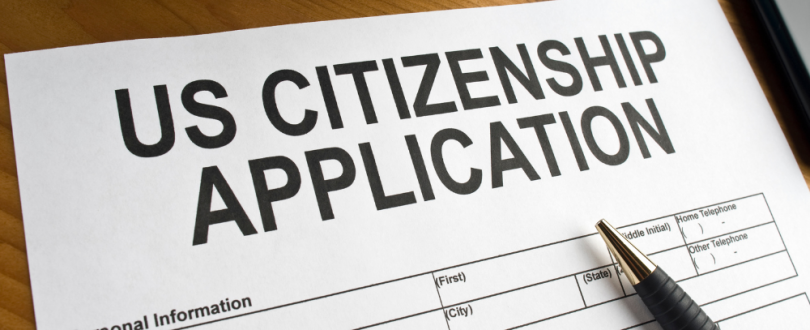
U.S. Visa to Citizenship Roadmap: A Comprehensive Guide to American Naturalization.
For many who arrive in the United States on various visas, the ultimate goal is to become a U.S. citizen. The path from holding a U.S. visa to obtaining American citizenship is a journey filled with significant milestones and stringent legal processes. This roadmap aims to guide you through the comprehensive process, shedding light on each crucial step.
Understanding Permanent Residency (Green Card)
The first step towards U.S. citizenship often involves obtaining a Green Card:
Path to Permanent Residency: Explain how a Green Card is the legal status that allows you to live and work permanently in the U.S. Discuss the various pathways to obtaining it, such as through family, employment, or as a refugee or asylee.
Rights and Responsibilities of Green Card Holders: Highlight the privileges, such as the ability to work in any job and protection under U.S. laws, along with responsibilities like paying taxes and obeying all laws.
The Naturalization Process
Naturalization is the key process through which a non-U.S. citizen voluntarily becomes an American citizen:
Eligibility Criteria: To apply, you must be at least 18 years old, a Green Card holder for a certain period (usually five years, or three if married to a U.S. citizen), and meet residency and moral character requirements.
Understanding the Process: It involves submitting an application, passing language and civics tests, and undergoing a background check.
N-400, Application for Naturalization
The N-400 form is the centerpiece of the naturalization process:
- Completing the Form: Guide readers through the process of accurately completing Form N-400, detailing the types of information required.
- Supporting Documentation: Explain what documents need to accompany the form, such as copies of your Green Card, travel records, and any name change certificates.
- Submission and Fees: Discuss where to apply and the associated fees.
Language and Civics Tests
An integral part of the naturalization process:
English Proficiency: Applicants are required to demonstrate a basic understanding of the English language.
Civics Knowledge: You must also pass a civics test, which covers important U.S. history and government topics.
Continuous Residence and Physical Presence Requirements
Applicants must meet certain residence and presence criteria:
- Continuous Residence: Define what is meant by continuous residence and the required duration for eligibility for naturalization.
- Physical Presence: Clarify the physical presence requirement, including the total time an applicant must physically be in the U.S. before applying.
- Breaking Continuous Residence: Discuss situations that might disrupt continuous residence, such as extended trips abroad, and how they affect eligibility.
The Naturalization Interview and Oath of Allegiance
This crucial phase in the citizenship process deserves careful preparation:
- Preparing for the Interview: Discuss what applicants can expect, including the types of questions asked, focusing on their background, application, and adherence to U.S. laws and values.
- The Oath of Allegiance Ceremony: Describe this final step in the naturalization process, where applicants swear allegiance to the United States and officially become U.S. citizens.
- Documentation and Appearance: Advice on the necessary documents to bring and the importance of presenting oneself professionally.

Dual Citizenship Considerations
Understanding the implications of holding citizenship in more than one country:
U.S. Policy on Dual Citizenship: Clarify that the United States allows dual citizenship but discuss the importance of understanding the policies of the applicant’s home country.
Rights and Responsibilities: Outline the rights and obligations that come with dual citizenship, such as potential tax liabilities and military service.
Derivative Citizenship for Children
Children of naturalizing U.S. citizens often have a path to citizenship:
Automatic Acquisition: Explain how, in some cases, children automatically become U.S. citizens when their parents naturalize.
Application Process for Children: Detail the process for children who do not automatically acquire citizenship, including necessary forms and evidence.
Expedited Naturalization Options
Some applicants may qualify for faster naturalization:
- Marriage to a U.S. Citizen: Discuss provisions for expedited citizenship for spouses of U.S. citizens, including reduced residency requirements.
- Military Service: Explain how service in the U.S. Armed Forces can lead to expedited naturalization, including during times of hostility.
Challenges and Solutions in the Citizenship Process
Navigating the path to citizenship can present hurdles:
Lengthy Processing Times: Address common concerns about long waits and how to track application status.
Documentation Challenges: Offer advice on managing documentation, including maintaining records and obtaining necessary paperwork.
Legal Assistance: Suggest when and how to seek help from immigration lawyers or advisors, especially in complex cases.
Transitioning from a U.S. visa holder to a citizen is a significant achievement that comes with a deep sense of belonging and participation in American life. While the journey involves navigating through numerous legalities and procedures, a well-prepared applicant can successfully achieve their dream of becoming an American citizen. This roadmap is designed to illuminate your path, providing the necessary guidance and clarity as you embark on this life-changing journey.

